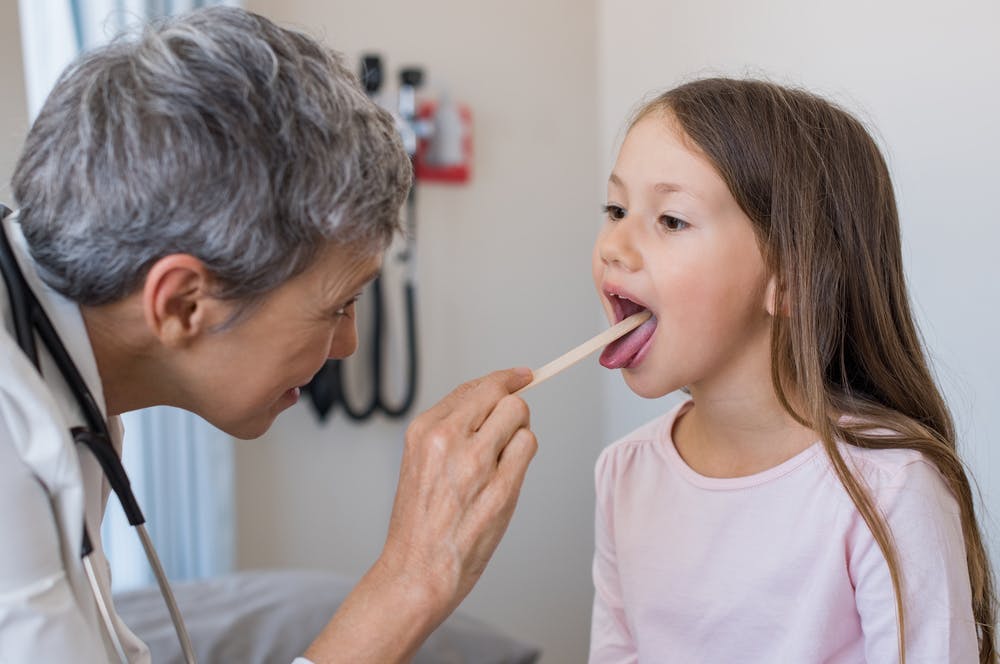How to handle nosebleeds in kids
Nosebleeds, which are medically referred to as epistaxis, occur when one or more blood vessels in the lining of the nose are broken. Nosebleeds in kids are a common occurrence during childhood and adolescence.
Although nosebleeds in children might appear concerning, the majority of nosebleeds are not serious and can easily be managed at home. If you’re a parent or caregiver, here’s everything you need to know, including what causes nosebleeds and how to handle them.
Frequent nosebleeds in kids
Although nosebleeds in children are common, frequent nosebleeds might be a symptom of another health condition such as allergies, respiratory illness or other conditions that affect the blood vessels in the nose.
If your child is dealing with nosebleeds regularly, you should see a medical professional as soon as possible for evaluation.
What causes nosebleeds?
The majority of nosebleeds are caused by the following:
- Dry air, such as in winter months and desert climates
- Picking the nose
- Blowing the nose with too much force
- Irritated nasal lining or mucous membranes, which can be caused by the common cold, allergies or sinus infections
Some less common causes of nosebleeds include:
- A foreign object in the nose
- Bleeding disorders
- Brain disease
- Injury or trauma
- Some medications
Types of nosebleeds
There are two types of nosebleeds, which are determined by the location of the bleed.
Anterior nosebleed
Anterior nosebleeds refer to bleeding that occurs in the front portion of the nose and is more common than posterior nosebleeds.
Posterior nosebleed
Posterior nosebleeds occur deeper in the nose, toward the back of the head. Due to the location of these nosebleeds, the blood flows down your throat even if you’re upright and leaning forward. This type of nosebleed is seen with injury or trauma to the nose and is less common in children.
Steps to stop a nosebleed
If your child’s nose begins to bleed, here are the do's and don'ts to help stop the bleeding.
- Stay calm. Nose bleeds can appear scary, but are often not serious.
- Help your child get into a seated or standing position and have them lean slightly forward.
- Gather clean tissues, napkins or other cloth material to help collect the blood.
- Pinch your child’s nose, between the nostrils and the bony part, and apply gentle pressure. Applying pressure to the broken blood vessel(s) helps stop the bleeding. Medical professionals recommend pinching the nose for 5 to 10 minutes continuously to stop the blood flow. Don’t release pressure to check if still bleeding, this may allow the bleeding to continue. Ask your child to breathe through their mouth during this process.
- Apply an ice pack or cold compress to the bridge of your child’s nose during or after pinching their nose. A cold application can help stop the bleeding by constricting the blood vessels.
Don’t:
- Stuff tissues, gauze or other materials into the nose.
- Have your child blow their nose. Blowing your nose during a nosebleed can prolong the bleeding.
- Avoid tilting the head back or moving the child to a reclined position. This can send blood traveling backward toward the throat, which can feel unpleasant and cause coughing, gagging or vomiting.
Repeat the above steps if the bleeding does not stop after the first attempt. If the bleeding continues after two attempts, seek medical care.
How to prevent nosebleeds
Here are some tips to help prevent nosebleeds:
- Use a humidifier to help add moisture to indoor air, which helps keep nasal passages from drying out. This is especially helpful during dry, winter weather.
- Try saline nasal spray or apply a bit of petroleum jelly inside your child’s nostrils to help seal in moisture and prevent dryness.
- Make sure your child is drinking enough water throughout the day since dehydration can contribute to dry nasal passages.
- Discourage nose picking since children can easily damage the nasal lining by picking at their noses.
- Model when and how to gently blow your nose. Children can trigger a nosebleed by blowing their noses too hard or too often.
When should I get my child medical attention
Most nosebleeds in children don’t require medical attention. However, if you can’t get the bleeding to stop or your child has frequent nosebleeds, you should see a medical professional.
Visit urgent care for nosebleeds
If you need help assessing and treating nosebleeds, come see the experts at one of our urgent care locations. You can walk in or you can save your spot online. We’ll have you back to feeling better in no time.
References
Tabassom A, Cho JJ. 2022, September 12. Epistaxis. StatPearls Publishing. https://www.ncbi.nlm.nih.gov/books/NBK435997/
2019, September. Nosebleeds (for Teens). Nemours KidsHealth. https://kidshealth.org/en/teens/nosebleeds.html
2022, September 13. Nosebleeds Causes. Mayo Clinic. https://www.mayoclinic.org/symptoms/nosebleeds/basics/causes/sym-20050914
2020, December 18. Nosebleeds: First Aid. Mayo Clinic. https://www.mayoclinic.org/first-aid/first-aid-nosebleeds/basics/art-20056683
Nosebleed (Epistaxis) in Children. Johns Hopkins Medicine. https://www.hopkinsmedicine.org/health/conditions-and-diseases/nosebleeds


